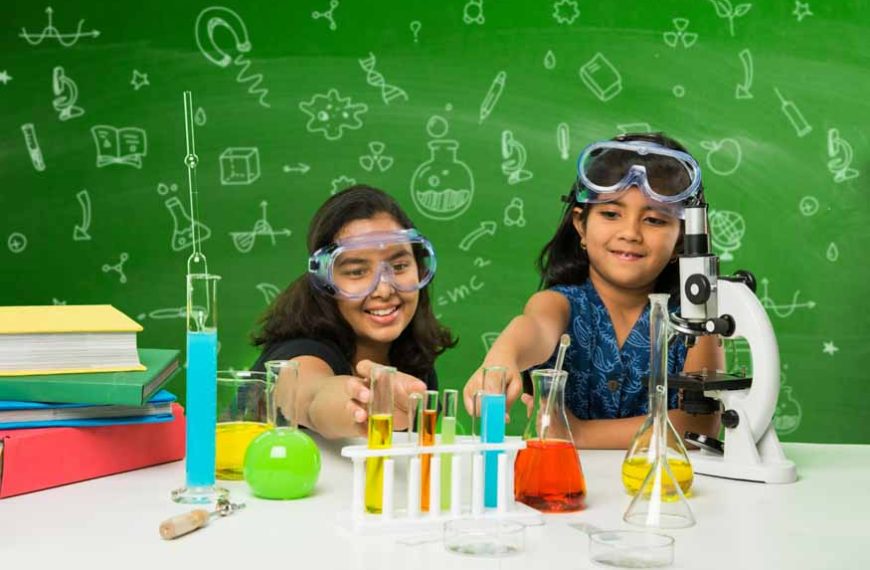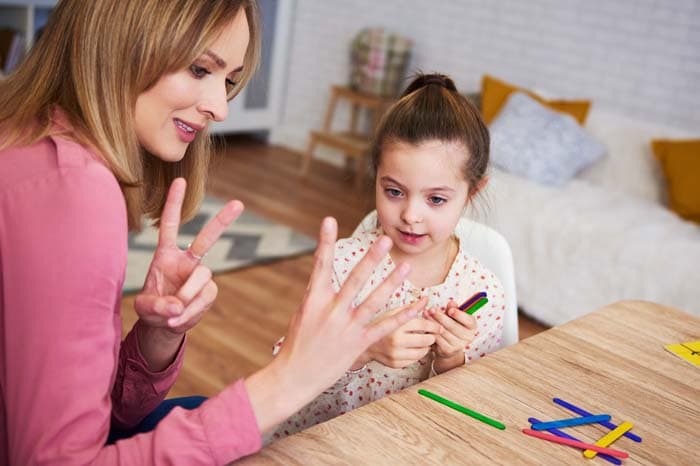Science surrounds us. It influences our daily existence in innumerable ways that we often take for granted. But even though science is all around us, youngsters may find it scary or even uninteresting. It becomes little more than a collection of boring textbooks chock-full of esoteric information and theoretical jargon that makes little sense in the actual world. But with a little imagination and work, you can make science an exciting journey that piques kids’ curiosity about the treasures that exist in their own homes, backyards, and communities. Making science engaging, practical, and enjoyable rather than dry and lecture-based is crucial. When you enable kids to experience science phenomena firsthand, it allows them to own the learning process. They engage in the thrill of inquiry, discovery, and problem-solving.
Sparking Curiosity:
Getting children excited about any subject is essential to piquing their natural curiosity. Kids love to ask “why.” By nature, children are keen observers and explorers, inherently curious about how the world works. As a parent or teacher, you can cultivate this curiosity by welcoming their why questions with open ears and minds. Resist the urge to supply all the answers right away. Instead, thoughtfully listen and have a real conversation. Ask follow-up questions showing your own curiosity about their ideas and thought processes. Guide them to investigate their own wonderings through hands-on exploration, making predictions they can test, and recording what they discover. Nurture their sense of wonder about scientific phenomena happening in their homes, backyards, and neighborhoods.
Everyday Science Investigations:
You don’t need fancy equipment to introduce kids to core science concepts. Daily activities like cooking, gardening, and cleaning provide great opportunities. For example, while baking, you can explain the chemical reactions happening, let kids observe the rising dough, and change one ingredient to discuss cause and effect. Simple science experiments with household items teach about physics, chemistry, and biology in memorable ways. Grow crystals, launch film canister rockets, sink eggs in different liquids – the possibilities are endless!
- Getting Hands-On:
- Telling Stories:
- Using Multimedia:
- Getting Outdoors:
Active, multisensory learning makes abstract concepts concrete. Let kids handle real science tools, touch specimens, mix substances, and move their bodies to experience the science principles physically. Set up stations for them to inspect objects with magnifying glasses, use droppers to squeeze liquids into containers, and examine their reflections in mirrors. While learning about ecosystems, have them physically act out food chains in a row. The more they can manipulate and explore materials themselves, rather than just sitting back and listening, the deeper their scientific understanding will be.
Humans have always used stories to make sense of the world and communicate ideas. Storytelling grabs attention, sparks visualization, and helps facts stick. Instead of just stating scientific facts, weave them into engaging stories, real or fictional. Share biographies about famous scientists like Marie Curie and Neil deGrasse Tyson, highlighting their childhood curiosity and discoveries. Read picture books about science or historical events like volcanoes erupting or dinosaurs going extinct. Have kids act out stories with scientific themes – let their imaginations soar!
TV shows, apps, videos, and interactive websites can reinforce science lessons in an entertaining way outside the classroom. Select age-appropriate media full of scientific content without distracting bells and whistles. For example, have younger kids watch Sid the Science Kid episodes discussing growth and change. Show Magic School Bus clips to elementary students illustrating concepts from class. Encourage teens to watch Mythbusters testing myths with the scientific method. Discuss any questions that come up during and after media viewing.
Nature is a free, open-ended science laboratory full of wonder and learning opportunities. Encourage kids to explore outside with all their senses and tools like magnifying glasses and binoculars. Have them document wildlife sightings, insect life cycles, or weather patterns over time. Challenge them to identify local plants, rocks, or cloud types using guides. Schedule hands-on visits to science museums, aquariums, planetariums, farms, or factories to ignite lifelong scientific passions.
Conducting Experiments:
Active experimentation brings the process of science to life so kids see that science is an exciting, ongoing endeavor. When kids design their own experiments, they take ownership of the learning. Brainstorm testable questions about the world, then have them guess answers, list materials, make step-by-step plans, record data, and discuss the results. Teach them to think critically about fairness, variables, and reliability of findings. Don’t just focus on outcomes – the joy is in the process!
Playing Games:
Everybody loves a good game, so games are fantastic tools for making science active and fun. Physical games like Red Light and Green Light reinforce concepts like speed and friction. Board games such as Biology-Opoly tap into science facts while building teamwork skills. Card games like Elementeo introduce chemistry symbols and combinations. Online games can teach anything from keyboard skills to coding to anatomy. Smartphone apps make it easy to learn on the go with science quizzes, puzzles, and quests. And nothing beats good old-fashioned Trivial Pursuit for quick science facts!
STEM Learning Through Real-World Connections:
Science, technology, engineering, and mathematics (STEM) provide the foundation for innovations that shape every aspect of modern life. When kids cannot clearly see connections between what they learn in school and real issues happening in their communities and globally, STEM can feel irrelevant and get tuned out. Providing authentic, socially conscious, and humanitarian-focused STEM learning experiences for kids can keep them engaged and motivated to use STEM for good.
For example, have students in urban areas investigate local air or water quality using sensors and data tools. Let them experience citizen science by collecting information on invasive species expanding into their neighborhoods due to climate shifts. Guide students, especially girls and minorities underrepresented in STEM fields, in designing simple inventions that solve problems their families or communities commonly face.
When kids ask why they have to learn seemingly dry, detached STEM concepts, remind them how satellites orbiting Earth right now provide GPS maps, telecommunications, and critical weather data and link their science lessons on plant growth with agricultural breakthroughs in hydroponics feeding people in drought areas. Show them how algorithms are developing artificial organs to reduce transplant shortages. Inspire future innovators and socially conscious citizens by empowering kids with real examples of how STEM improves lives and solves global challenges today. They will start viewing STEM literacy not as an abstract school subject but as a launchpad to pursue their passions and create the change they wish to see in the world.
Inspiring Wonder:
At the end of the day, science is magical when it fills kids with awe about the mysteries of everything from tiny atoms to the vast universe. Let them soak up the beauty and intricacy of a butterfly wing through a magnifying glass. Gaze at the stars together from your backyard and talk about outer space. Drop some effervescent tablets in water so they can delight in the bubbles. Watch their faces light up when you reveal a fossil they “discovered” in a plaster dig kit. By sharing your own passion and sense of wonder about science, your kids are sure to catch the bug!
The key is making science active, hands-on, multimedia, and fun instead of passive and lecture-based. Enable kids to experience science phenomena firsthand so they own the learning. Tap into their innate curiosity through games, stories, free play, and conversing. The excitement and pride kids gain by investigating how the world works can launch a lifelong interest in science that pays dividends for them as well as society. So step back, give them space to explore, guide their inquiries, celebrate their discoveries, and most importantly, keep fostering that insatiable sense of wonder!
For more such interesting blogs, Visit EuroKids














